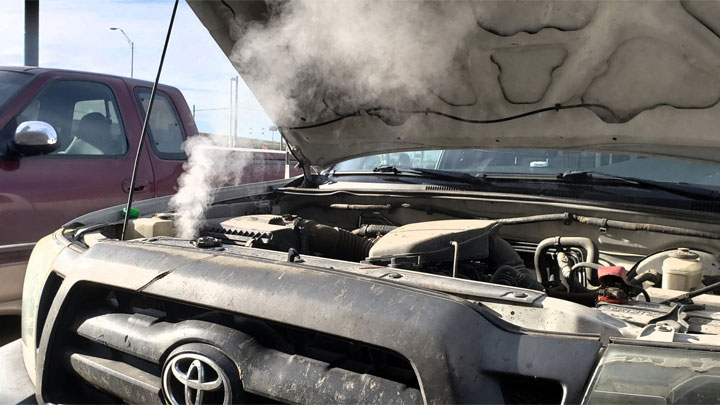Common Radiator Problems

Your car’s radiator is one of those components that you don’t give much thought to unless there is a problem. However, it typically has no trouble grabbing your attention when it wants to. Your automobile’s cooling system is made up of the radiator, thermostat, and water pump; if there is a malfunction, the operating engine’s extremely high temperatures will cause the car to overheat and probably fail. Your engine operates at a high temperature (about 200 degrees Fahrenheit), and if it isn’t being cooled, the other parts of the undercarriage may suffer as a result.
The fluid that circulates around the engine block to disperse heat is cooled by the radiator, which prevents overheating. When the radiator starts to emit smoke, It is a sign that the radiator has failed to do its job, which has caused the automobile to overheat.
To maintain your automobile as healthy as possible, it’s crucial to understand some of the more typical radiator issues, how to avoid them, and how to correct them.
1.Leaks
Leaky hoses are the most frequent cause of radiator leaks, but the radiator itself can also leak, which can be a bigger issue. There is a lot of pressure created by the coolant flowing continuously from your radiator to your hot, running engine and back again. Your radiator hoses will eventually perish due to that pressure buildup.
The hoses will eventually deteriorate or become loose, allowing coolant to leak out of the system and eventually causing overheating. Your radiator is leaking if you notice green fluid under your car or nearby and you smell something pleasant. Even if your radiator’s hoses are in good condition, excessive corrosion can still result in a leak in the radiator’s body.
Solution: As part of routine maintenance, you should regularly replace your radiator hoses.
2. Rotted Radiator
You will undoubtedly become aware of any outside corrosion on your car. But that doesn’t mean it’s not happening in your car even if you can’t see it. Rust and oxidation are inevitable when metal, liquid, and air are together. Your radiator contains each of those components, making rust a serious hazard. Your radiator may develop holes, leak, or have other problems if it becomes overly corroded.
Check your radiator for rust if your automobile is running too hot. You should be able to see it clearly from the outside, but you can also detect if your coolant starts to turn brown. You should be extra cautious for corrosion if you drive your car in chilly climates.
3. Other Obstructions and Gunk
A buildup of mineral deposits, also known as “gunk,” is another typical issue with radiators. You may recognize gunk by its thick, ugly, goopy nature, which appears to exist for no other purpose than to clog things up. Your radiator’s ability to pump the right quantity of coolant to the engine is hampered by mineral deposits, byproducts, debris, and other obstructive buildup. If your automobile is overheating or heating up too quickly and you don’t notice any signs of rust, leaks, or hose separation, look inside the radiator for any accumulation of gunk.
4. Faulty thermostat or a water pump
Keep in mind that your radiator is just one component of a larger, interconnected cooling system, and that for the system to function effectively, all of the other components must also be. The system won’t know when to discharge fluid into the radiator if the thermostat malfunctions, and it won’t have the pressure it needs to circulate the coolant if the water pump malfunctions. Both of these scenarios will prevent the radiator from functioning as intended.
Solution: Replacement of the malfunctioning thermostat or water pump is the sole option in these situations.
5. Overheating When Idle
Any issue with the cooling system often manifests as an overheated radiator or engine. However, a broken radiator fan is frequently at blame if the temperature gauge suddenly rises while you’re stuck in traffic or idling for any other reason. An electric fan that sucks air into the radiator to keep it cold when you are idling or traveling at a low pace is another component of your coolant system, especially if you have a modern car. The frequent result of this fan breaking is idle overheating.
Solution: However, replacement is frequently your only option.







